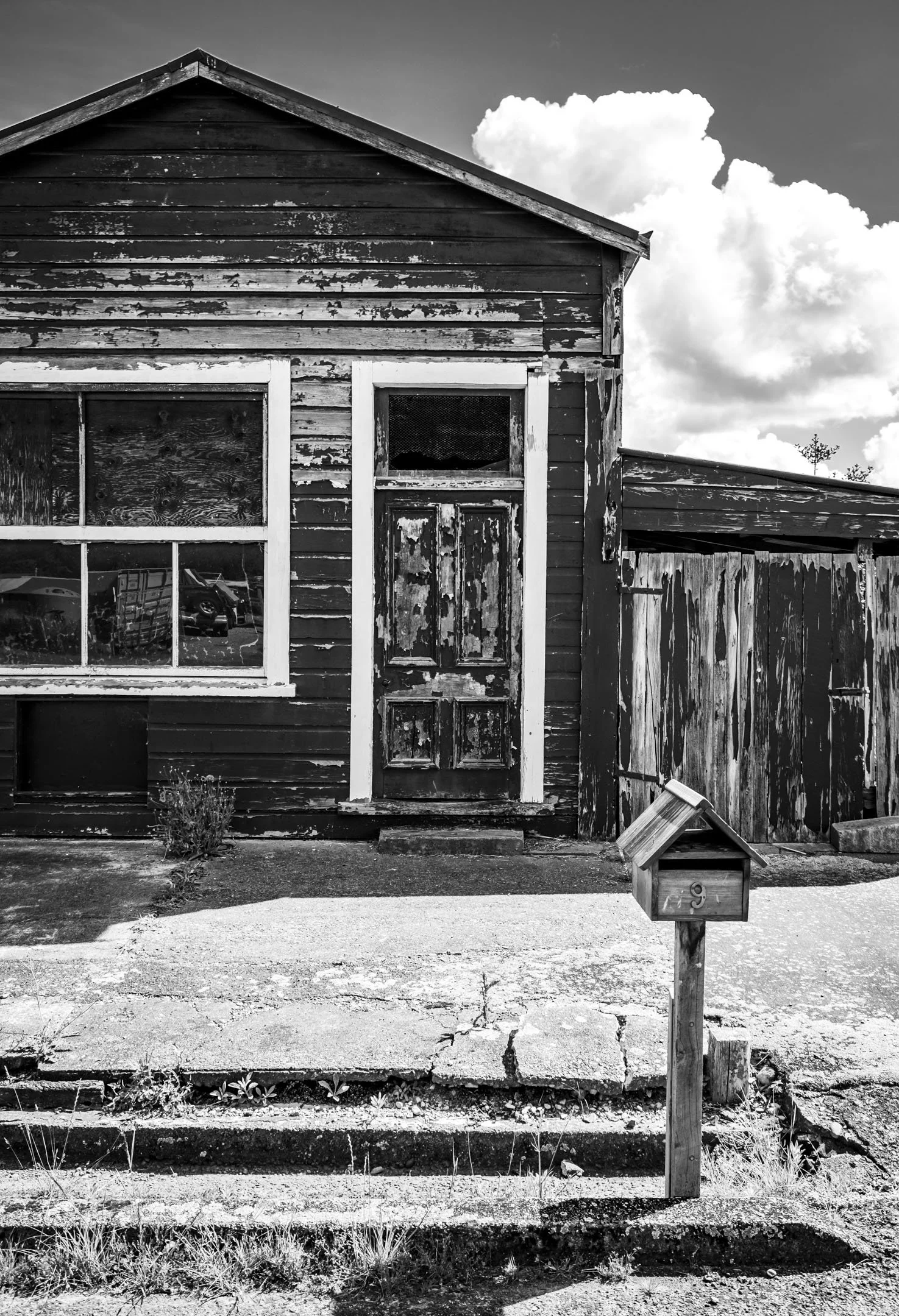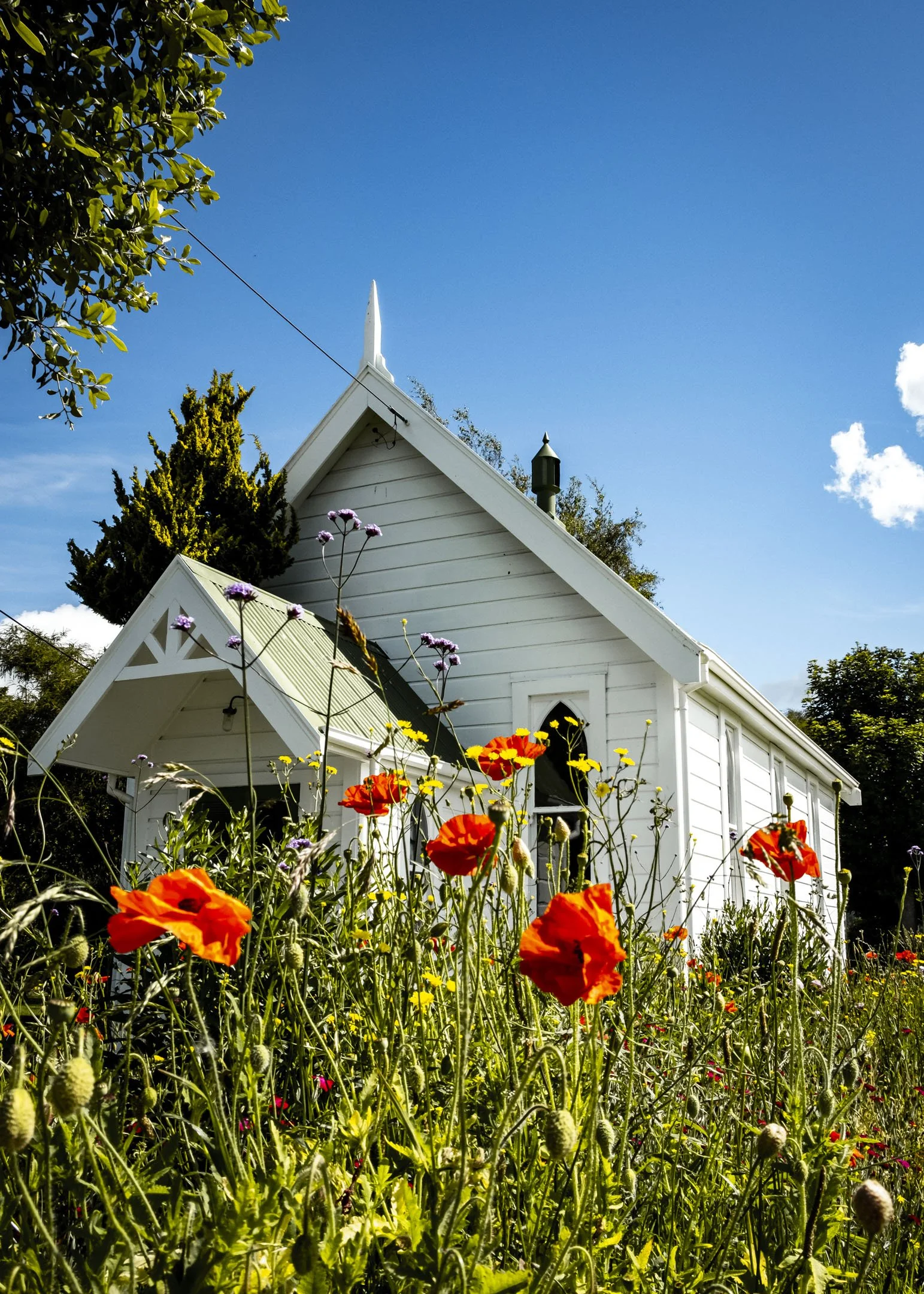X-Factor
Taking the X-T3 for a spin capturing some contrasty black and white urban landscapes on a sunny afternoon in the small Manawatu settlement of Apiti.
I bought a new camera.
Contrary to expectation, it wasn’t a Nikon.
The very first ‘proper’ camera I ever bought was a Nikon F100 film body, and as the years went by, and technology progressed from film to digital, I stuck with the brand with each new camera. A dyed in the wool Nikon supporter, even my lenses were all first party Nikon glass - not even a single third party lens in the mix.
Having invested years ago in some top-end professional Nikon glass, I have been very well served by the brand’s products over the past two and a half decades. I’ve certainly gotten more than my money’s worth out of my trusty 24-70 f/2.8 workhorse - it has stayed my lens of choice through a range of camera bodies, and never missed a beat. Similarly my 70-200mm f/2.8 telephoto lens has been a rock, despite a couple of pretty significant knocks over the years. But nothing lasts forever, and both these have gotten to the point where they’re in dire need of replacement.
Looking at the wider context, the industry has also reached the point where one can hardly put off moving to mirrorless much longer. As a result, I effectively have to almost start from scratch with my camera gear, leaving me in the somewhat unique situation where I can consider any brand, being less tied in by my lens investments that I have ever been before in my career.
In addition to being a Nikon shooter (and I do still love the brand), I was also committed to full frame. If you shoot Nikon (or Canon, or Sony) you certainly don’t have any other choice as a professional photographer - the crop sensor offerings from these brands are aimed squarely at the amateur market, and quite a step down in terms of professionalism from their full-frame ‘prosumer’ offerings.
But the problem is full frame is expensive, it’s heavy and it’s bulky. I’ve long been frustrated by the fact that, when you have to fly for a photography job where you need a few lenses and a back up camera body, it is nigh impossible to come in under the carry-on weight limit.
Which prompted me to start seriously looking at alternatives.
Unlike the full-frame trifecta of Nikon, Canon and Sony, brands like Fujifilm and Olympus/OM Systems have gone the other route, bucking the full frame trend and placing their bets on the crop sensor market. And it makes so much sense. Crop sensor cameras are typically smaller. Crop sensor lenses (even high quality ones) are more compact, simpler, lighter and significantly cheaper than their full frame counterparts. Sensor technology has developed in leaps and bounds over the past decade or so, and where there once may have been an argument about inferior image quality in crop sensors, that is hardly a concern anymore - housed in a professional quality camera and lens combination, there is absolutely no reason why you cannot produce professional quality images using APS-C sensor technology.
Playing with RAW colour edits on an image captured with the new Fujifilm X-T3.
So I bought a Fuji.
I bought an end of range Fujifilm X-T3, nicely discounted now that the rather drool-worthy X-T5 has been released. (I’ve never been an early adopter so there was little chance of me rushing out and grabbing one of the first X-T5’s - my argument is that I will test the Fujifilm environment with the more affordable X-T3, and if I enjoy the look of the images and the feel of the camera, I can always invest in an X-T5 a year or so down the line, once the odd special deal on the new camera starts appearing. And I will still have the X-T3 as a very able back-up body.)
Besides making sense from a size and cost perspective, I have to admit to also being completely seduced by the Fujifilm aesthetic. These retro-styled X-series cameras are just so beautiful. Call me a hipster, but there’s something very special about a camera with real, functional old-fashioned dials. And an actual aperture ring - man, how I’ve missed that. And have I mentioned that it is so small that you can pack two bodies and a bevy of lenses, flashes and more and still easily meet any carry-on weight limits?
A camera is more than a tool - if you’re a photographic artist, surely your camera, as an extension of your creativity, should stir your emotions, and not just be a black box that produces sharp, correctly exposed pictures. And I love the obvious passion of the Fuji X-shooter community - I want to be one of the X-shooters, it inspires me to get out there, to get creative and to become an active part of the X-community. I have as yet not had much chance to really put the X-T3 through its paces, having gotten Covid at about the same time the new camera arrived. But I am slowly starting to hit the streets - watch this space.
(PS: Despite the shift to Fujifilm, I should mention my trusty Nikon D750 is still as good as new (what a timeless, wonderful camera it is), and I still have a few Nikon lenses that are so great that I get emotional just thinking about them. I don’t, for example have any Fuji lens yet to match my Nikon 85mm f/1.4 portrait lens, so the Nikon kit will certainly still be doing primary portrait duties. But on general assignments, events and documentary shoots you will certainly start seeing me around more and more with that sexy little X-T3 around my neck.)

